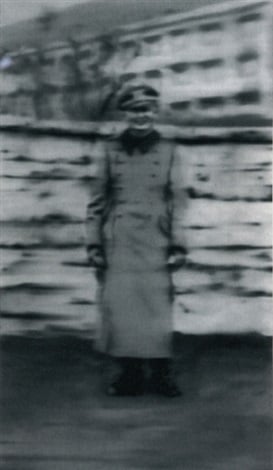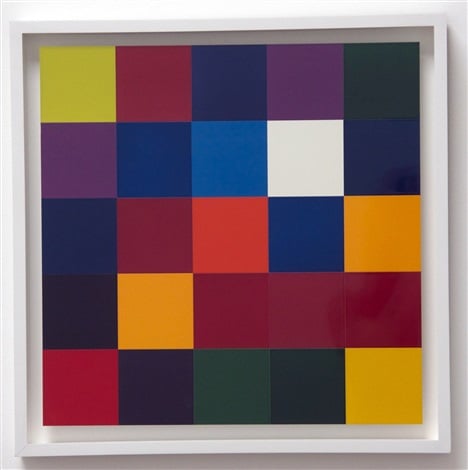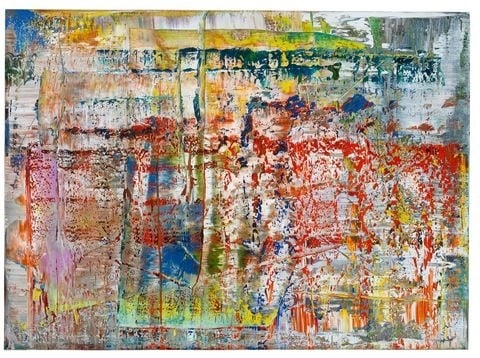People
Gerhard Richter: The World’s Highest-Priced Genius
One man's love affair with art is another man's collectible.

Photo: David Benrimon Fine Art, LLC
One man's love affair with art is another man's collectible.

Amah-Rose Abrams

Gerhard Richter is commonly known as the world’s greatest living painter. A master of both figurative and abstract work, his prices are among the highest in the world—what about Richter inspires such enthusiasm from the art market?
Richter, born in 1932, grew up in Eastern Germany as it fell under Soviet control.
When he was old enough, Richter returned to the city in 1951 of his birth to study art in Dresden, a city that still bore the scars of the extensive bombing it received at the end of the war. Thrilled at being accepted into the academy, Richter moved in with his aunt and threw himself into a strict routine of study.
“It was something really great to be admitted to the Academy at all, and even the wrecked building on Brühl’s Terrace was very impressive. It was great being part of all that, and the fact that the teachers were real artists,” Richter told Jan Thorn-Prikker in 2004. “The five-year course was rigorous, beginning at eight in the morning and involved eight hours a day of lessons.”
The training he received was extremely technical and practical, and although Richter has repeatedly expressed how much he disliked being forced to learn Russian and take in propaganda, the art education he received in Dresden was a good one. He received his first commission, a mural at the German Hygiene Museum, and graduated in 1956. Still unsure about whether he could pursue a career as an artist, Richter began to feel restricted by life in East Germany and, after a visit to documenta II in West Germany, he began to think seriously about moving. Finally in 1961, Richter and his then-wife Ema moved to West Germany, declaring themselves refugees on arrival.

Gerhard Richter Onkel Rudi (Uncle Rudi) (2000)
Photo: Kenneth A. Friedman & Co.
The young artist then began to study at the Düsseldorf Academy, where he joined a class taught by Karl Otto Göz.
“I was incredibly lucky to find the right friends at the Academy: Sigmar Polke, Konrad Fischer, and [Blinky] Palermo,” he explained to Jan Thorn-Prikker in 2004.
Richter cites the Fluxus and Pop Art movements as great influences on his work. Joseph Beuys began teaching at the Düsseldorf Academy shortly after Richter arrived, and by his very presence the Academy became the epicenter of the Fluxus movement. In 1964 Richter held his first solo show at Alfred Schmela’s gallery in Düsseldorf, and also showed work in Munich and at René Block’s gallery in Berlin.

Gerhard Richter 25 Farben 902-18 (2007)
Photo: courtesy Anthony Meier Fine Arts
During this time, he began to increasingly paint from his own photography, and expanded into using more color in his work. The signature blurring technique he used had an extremely lifelike effect when used to depict light, and his ability to create photorealistic images while still retaining the “magic” of a painting made him increasingly well known.
Towards the end of the 1960s, Richter began to paint landscapes and abstract works, later saying he was wary of being pigeonholed as a photorealistic painter. By this time he was also showing work internationally, from New York to Tokyo.
In 1972, he represented Germany at the 1972 Venice Biennale—a definite sign that Richter success as an artist was building. Throughout the following decade he worked on cataloging his atlas of images, developing his colour chart series, and began creating InPaintings, which are works that begin as figurative, and develop into abstraction and abstract streak paintings created though smearing and dragging the still-wet oil pain. His first retrospective took place at Kunsthalle Bremen in 1976.

Gerhard Richter Orchidee I (1998)
Photo: courtesy Galerie Schwarzer GmbH
During the 1980s, Richter’s career continued to flourish, as did his technique. He began to produce ever-more accomplished works, leaving viewers marveling at his mastery of the medium of paint. In 1986, Abstrakes Bild (1986) sold at Sotheby’s London for £30.4 million ($56.5 million), breaking the record for the highest price ever fetched at auction by a living artist.
Throughout the 1990s his work continued to gain a much wider audience, especially through the popularity of the October 18, 1977 (1988) series which focused on the deaths of members of the German terrorist group, Baader Meinhoff. His first retrospective in the United States took place at the Art Gallery of Ontario, and then travelled to the Museum of Contemporary Art in Chicago in 1988.

Gerhard Richter P1 (Abstraktes Bild) (2014)
Photo: courtesy Galerie Merrow
Richter was also given a retrospective at Tate Gallery in London in 1991, and he would have another retrospective at Tate Modern in 2011, followed by other exhibitions at MoMA, the Getty Institute, The Serpentine Gallery, and the Hirschorn Museum. Represented by Marian Goodman, at this point Richter’s works continued to fetch record-breaking prices at auction—much to his chagrin.
“It is really quite alarming, particularly when you take a look at the catalogues. They always send them to me and they get worse and worse. You cannot imagine what rubbish is offered, at prices that are rising all the time,” he told Die Zeit in 2015.
Richter continues to evolve as an artist, creating critically acclaimed series such as Cage (2006) and Strip (2011), and will no doubt continue to fetch eye-watering prices at auction all over world. The irony, of course, is that he doesn’t collect art himself.
“I don’t spend money on art,” he revealed to Die Zeit. “I like looking at paintings, but I go to a museum to do so. I don’t have to own art myself.”
Clearly, the collectors of his work feel differently.